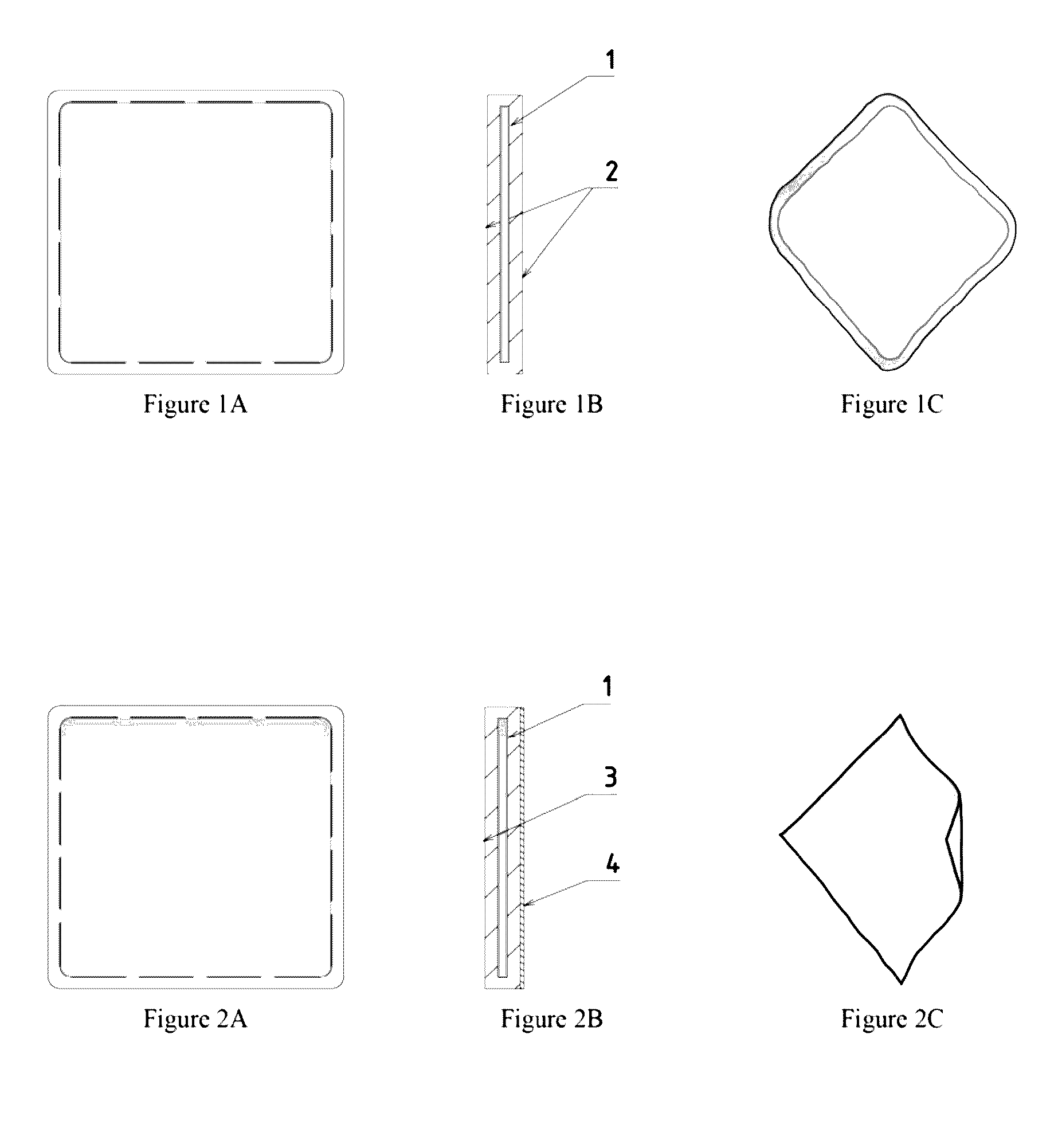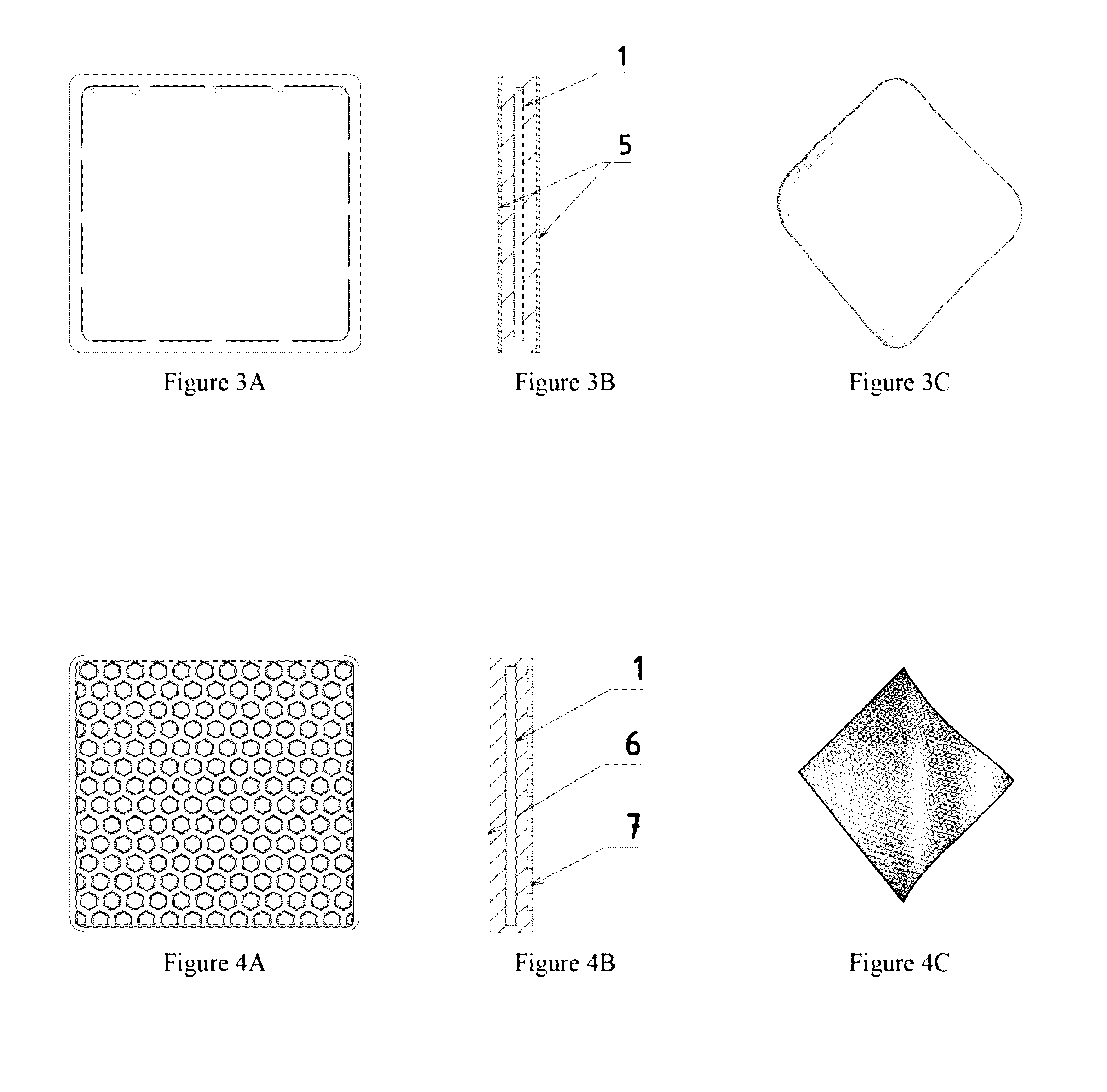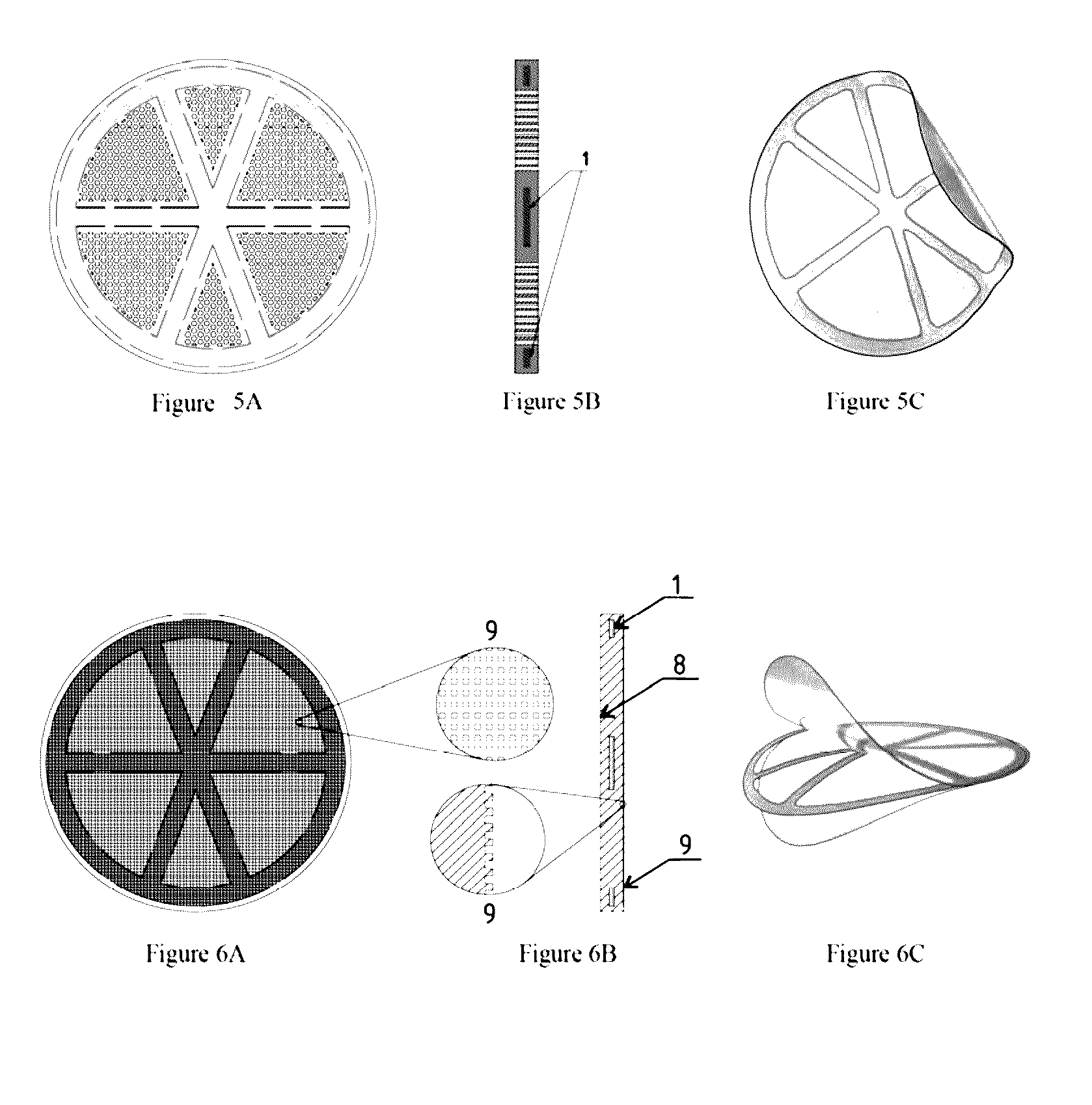Multipurpose implant with modeled surface structure for soft tissue reconstruction
a soft tissue reconstruction and multi-purpose technology, applied in the field of medicine, can solve the problems of inability to meet the task of creating such an implant, inconvenient use, and inability to achieve the effect of achieving the effect of achieving the effect of achieving the effect of achieving the effect of achieving the effect of achieving the effect of achieving the effect of achieving the effect of achieving the effect of achieving the effect of achieving the effect of achieving the effect of achieving the effect o
- Summary
- Abstract
- Description
- Claims
- Application Information
AI Technical Summary
Benefits of technology
Problems solved by technology
Method used
Image
Examples
example 1
[0113]To manufacture elastic artificial implants for restorative and reconstructive surgery a casting mold is used consisting of two parts made of glass (FIG. 1).
[0114]Onto the lower part 2 of the mold a first light-sensitive material 4 (number 1) is poured, consisting of:[0115]benzyl methacrylate 31.68 wt. %;[0116]methacrylic acid 1.97 wt. %;[0117]octyl methacrylate 1.97 wt. %;[0118]dinitrilazo-bis-isobutyric acid 0.005 wt. %;[0119]2,2-dimethoxy-phenylacetophenone 0.88 wt. %;[0120]3,5-di-t-butyl-o-quinone 0.01 wt. %;[0121]inorganic pigment ultramarine 463 1.0 wt. %;[0122]oligourethane methacrylate the rest,
whereby an upper meniscus is formed (FIG. 2). The lower part of the mold with the first light sensitive material is covered with the upper part of the mold on which are fixed the limiting ring 3 and the photo-mask 5, which corresponds to the outer geometrical dimensions of the product to be formed and which is protected by the PET-film 6 (FIG. 3). The two parts of the mold are fi...
example 2
[0133]An artificial elastic implant for restorative and reconstructive surgery is made as in Example 1, but, before the developing takes place, onto the lower part of the mold with the layer that has just been formed, the liquid photosensitive material number 1 is poured to form a meniscus. In this way an implant is produced, which has surfaces different in structure but identical in elasticity (FIG. 5); such an implant can be used, for instance, for complicated neurosurgical interventions on the brain—in case of swelling or dislocation to reduce the trauma of tissues and to provide for areactivity in the post-operative period.
[0134]Patient K., male, age 43 was hit by a car Oct. 4, 2008 and admitted to MLPU “City Clinical Hospital No 39.” The MR-tomograms of the patient revealed an acute subdural hematoma in the right fronto-temporo-parietal region, causing a 4 mm dislocation of the brain to the left. Oct. 5, 2008 the patient underwent resection craniotomy in the right temporo-parie...
example 3
[0135]An artificial elastic implant for restorative and reconstructive surgery is made as in Example 1, but, before superimposing the upper part of the mold on the lower part of the mold, the liquid photosensitive material number 2 is poured to form the meniscus. This way we receive an implant that has surfaces different in structure but identical in elasticity (FIG. 5): parietal that is intended for contacting with the abdominal wall, and visceral that is intended for contacting with the abdominal cavity, which allows to use it, for example, for reconstructive surgery of the abdominal wall by the intra-abdominal (intraperitoneal) plasty, to reduce the trauma of tissues and to provide for areactivity in the post-operative period.
PUM
| Property | Measurement | Unit |
|---|---|---|
| roughness | aaaaa | aaaaa |
| weight percent | aaaaa | aaaaa |
| weight percent | aaaaa | aaaaa |
Abstract
Description
Claims
Application Information
 Login to View More
Login to View More - R&D
- Intellectual Property
- Life Sciences
- Materials
- Tech Scout
- Unparalleled Data Quality
- Higher Quality Content
- 60% Fewer Hallucinations
Browse by: Latest US Patents, China's latest patents, Technical Efficacy Thesaurus, Application Domain, Technology Topic, Popular Technical Reports.
© 2025 PatSnap. All rights reserved.Legal|Privacy policy|Modern Slavery Act Transparency Statement|Sitemap|About US| Contact US: help@patsnap.com



